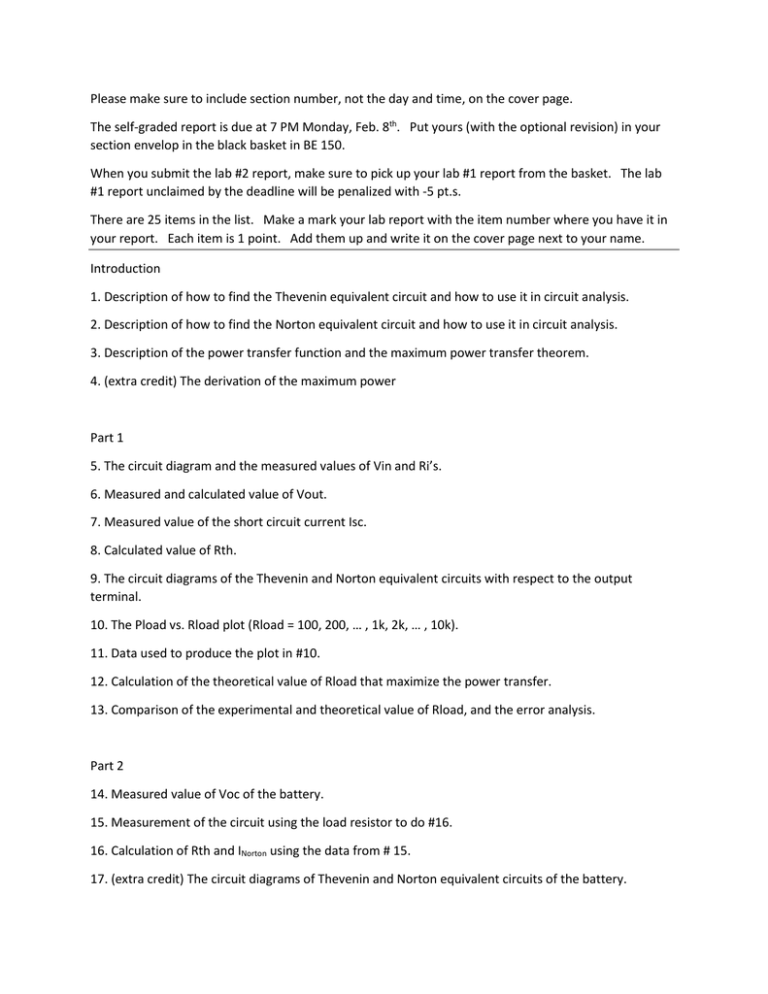Rubric for Lab 2 Report
advertisement

Please make sure to include section number, not the day and time, on the cover page. The self-graded report is due at 7 PM Monday, Feb. 8th. Put yours (with the optional revision) in your section envelop in the black basket in BE 150. When you submit the lab #2 report, make sure to pick up your lab #1 report from the basket. The lab #1 report unclaimed by the deadline will be penalized with -5 pt.s. There are 25 items in the list. Make a mark your lab report with the item number where you have it in your report. Each item is 1 point. Add them up and write it on the cover page next to your name. Introduction 1. Description of how to find the Thevenin equivalent circuit and how to use it in circuit analysis. 2. Description of how to find the Norton equivalent circuit and how to use it in circuit analysis. 3. Description of the power transfer function and the maximum power transfer theorem. 4. (extra credit) The derivation of the maximum power Part 1 5. The circuit diagram and the measured values of Vin and Ri’s. 6. Measured and calculated value of Vout. 7. Measured value of the short circuit current Isc. 8. Calculated value of Rth. 9. The circuit diagrams of the Thevenin and Norton equivalent circuits with respect to the output terminal. 10. The Pload vs. Rload plot (Rload = 100, 200, … , 1k, 2k, … , 10k). 11. Data used to produce the plot in #10. 12. Calculation of the theoretical value of Rload that maximize the power transfer. 13. Comparison of the experimental and theoretical value of Rload, and the error analysis. Part 2 14. Measured value of Voc of the battery. 15. Measurement of the circuit using the load resistor to do #16. 16. Calculation of Rth and INorton using the data from # 15. 17. (extra credit) The circuit diagrams of Thevenin and Norton equivalent circuits of the battery. Part 3 18. The circuit diagram and the measured values of Vs and Ri’s. 19. Measurement of Voc and Isc between the node a and b. 20. The calculated value of the Thevenin resistance of the circuit from # 19. 21. Measurement of the circuit using a specific resistor to do # 22. 22. Calculation of Voc and Isc from # 21 and comparison with the measured value from # 19. 23. (extra credit) The circuit diagrams of Thevenin and Norton equivalent circuits of the circuit in #18. Conclusion 24. The summary of the topics you learned in this lab demonstrated with the result of your lab activity. 25. The personal appreciation of the lab. (What you like/hate, the difficulties/inspirations while you working on the lab. Any suggestion on how to improve the future lab #2)


